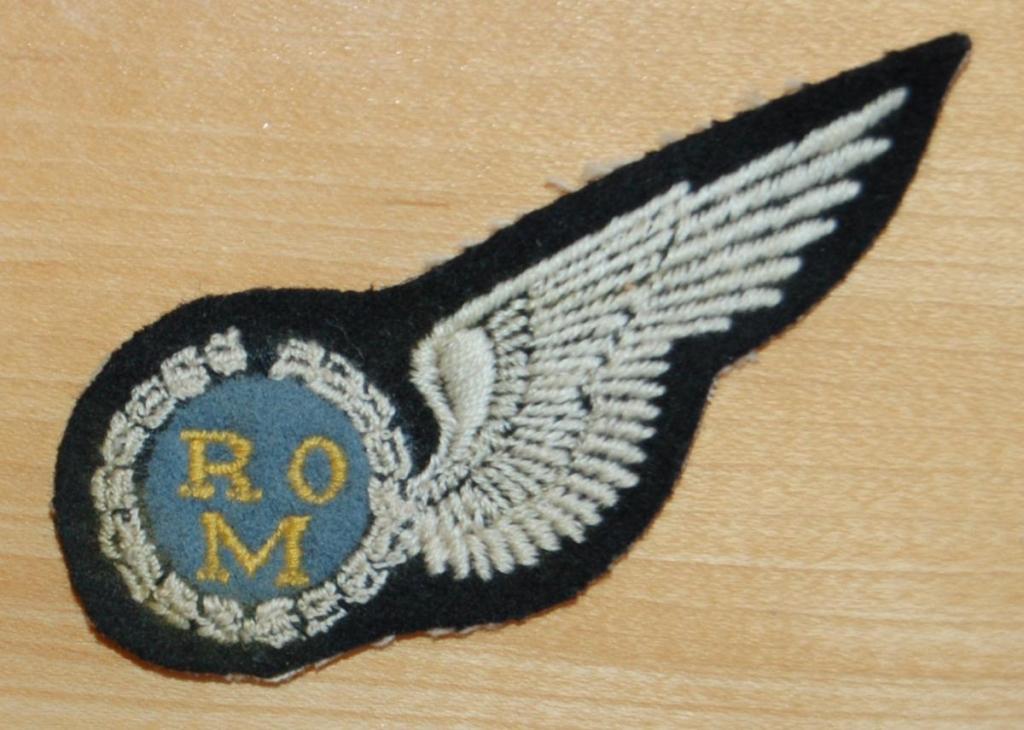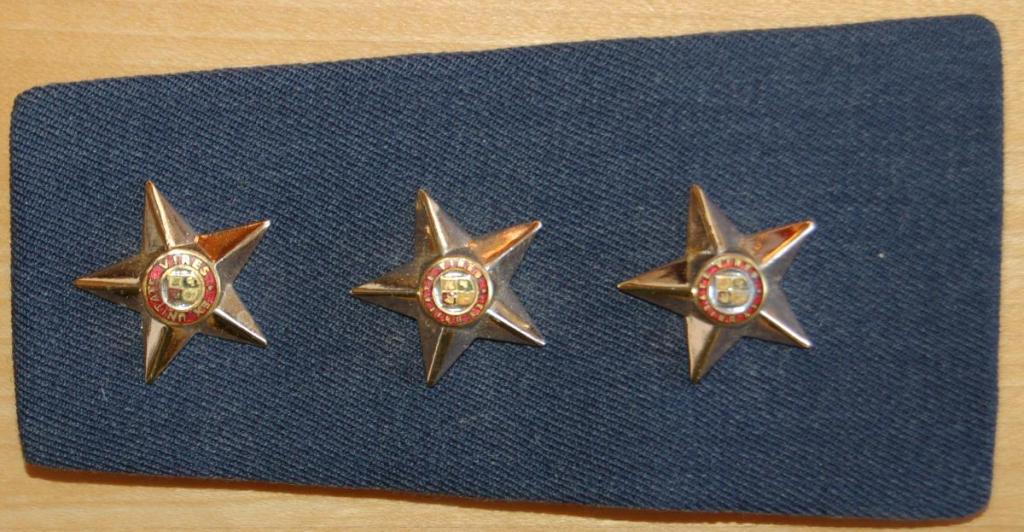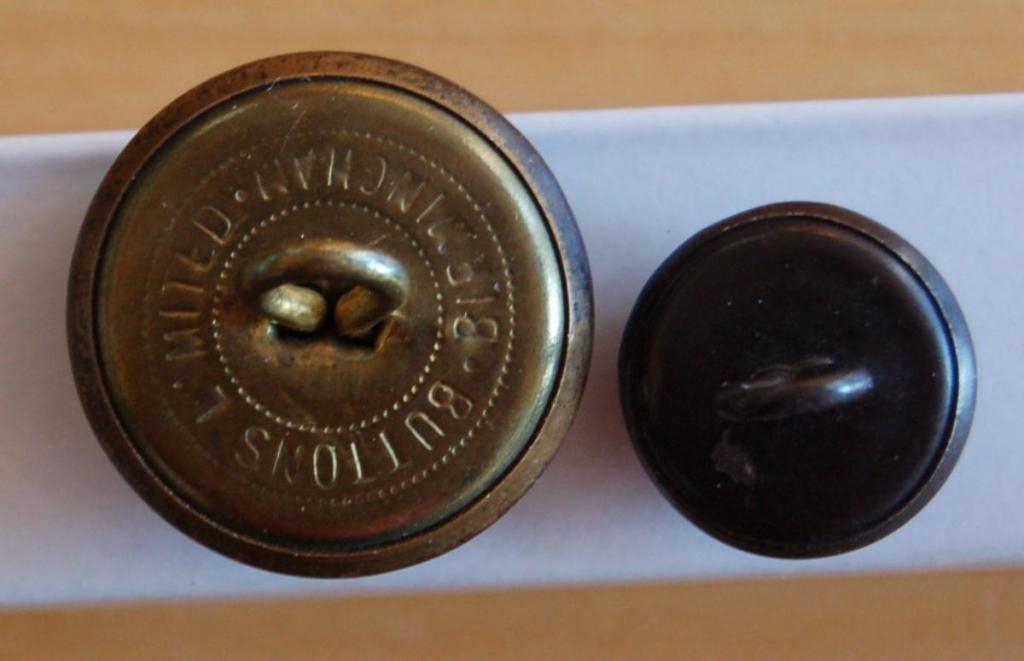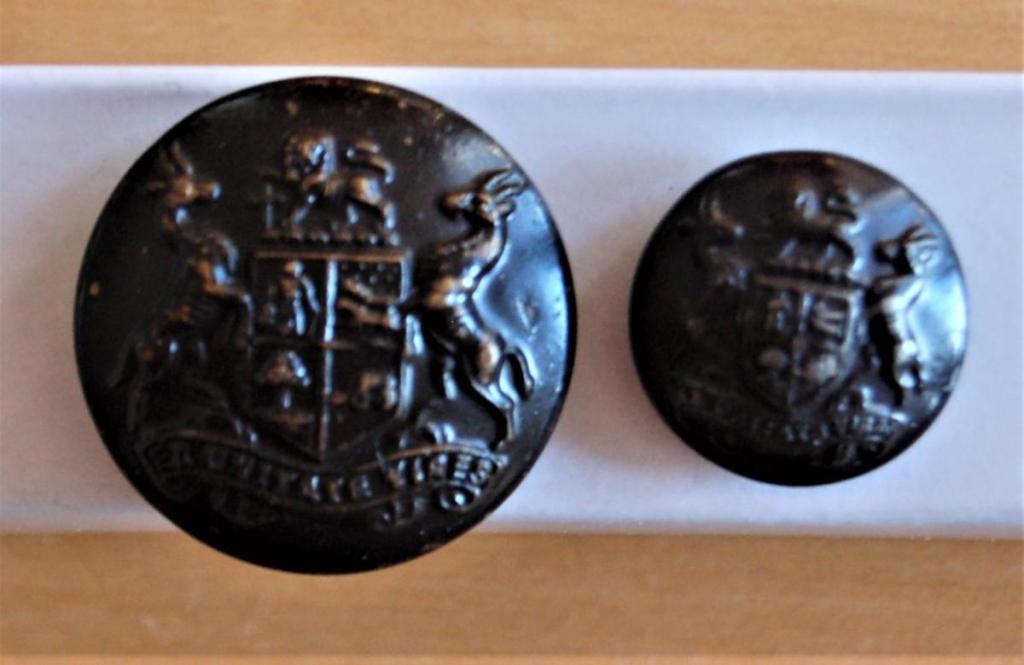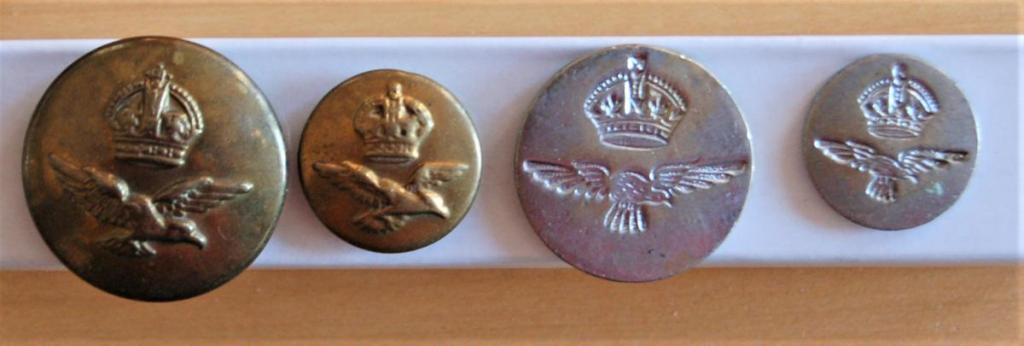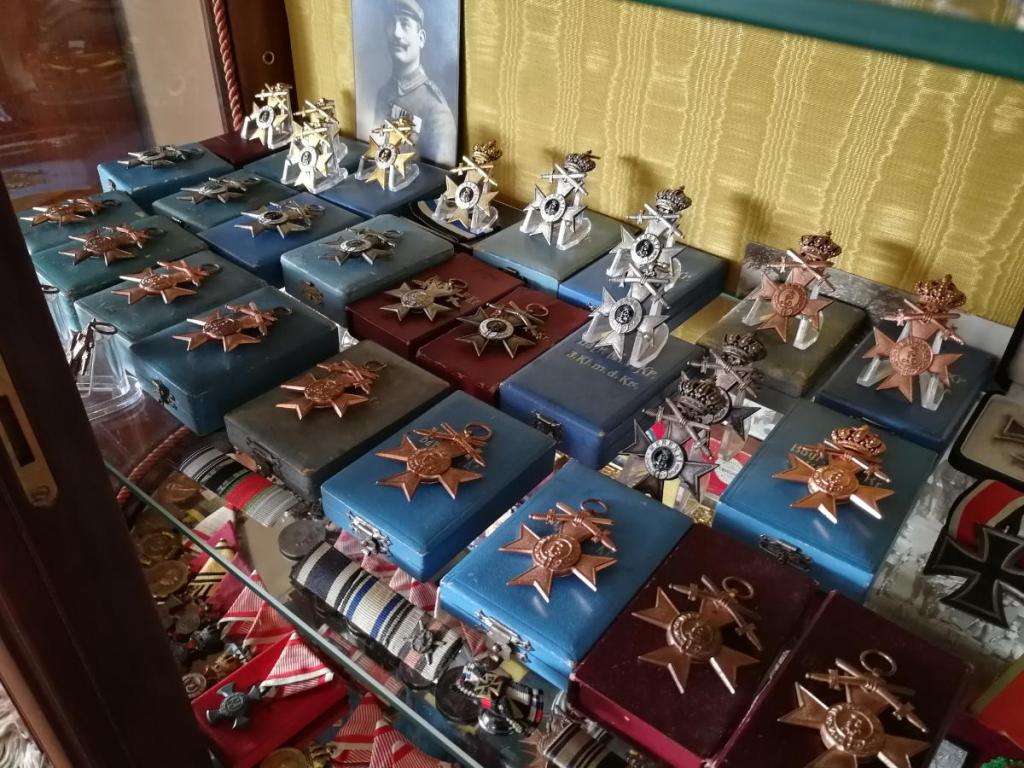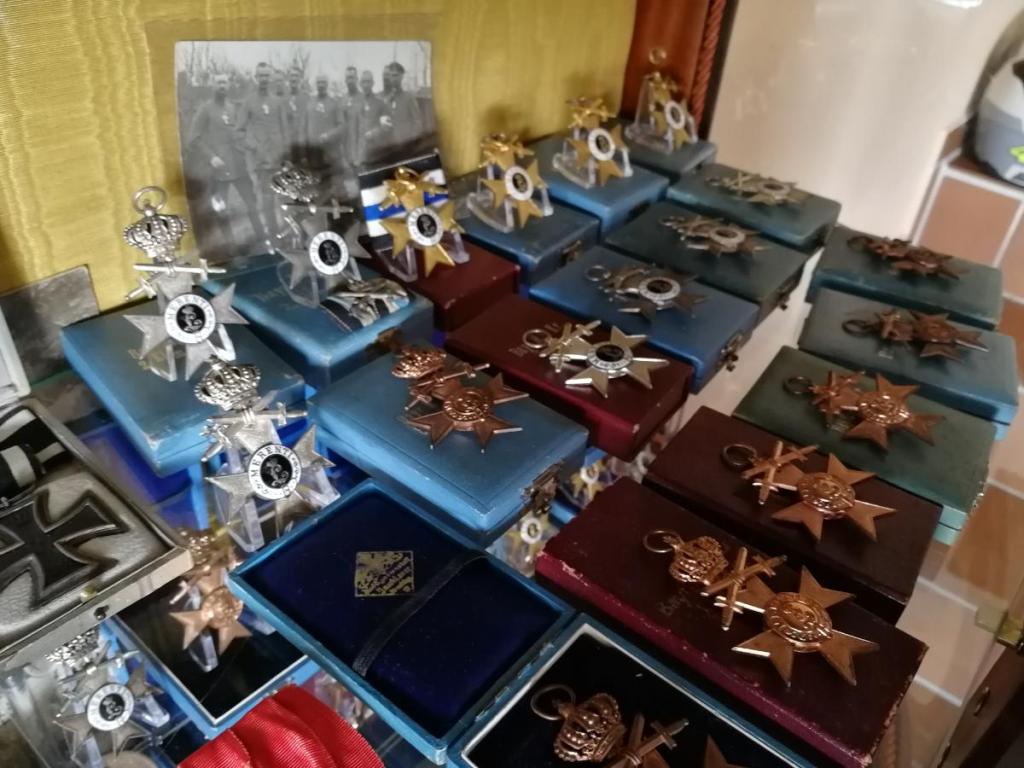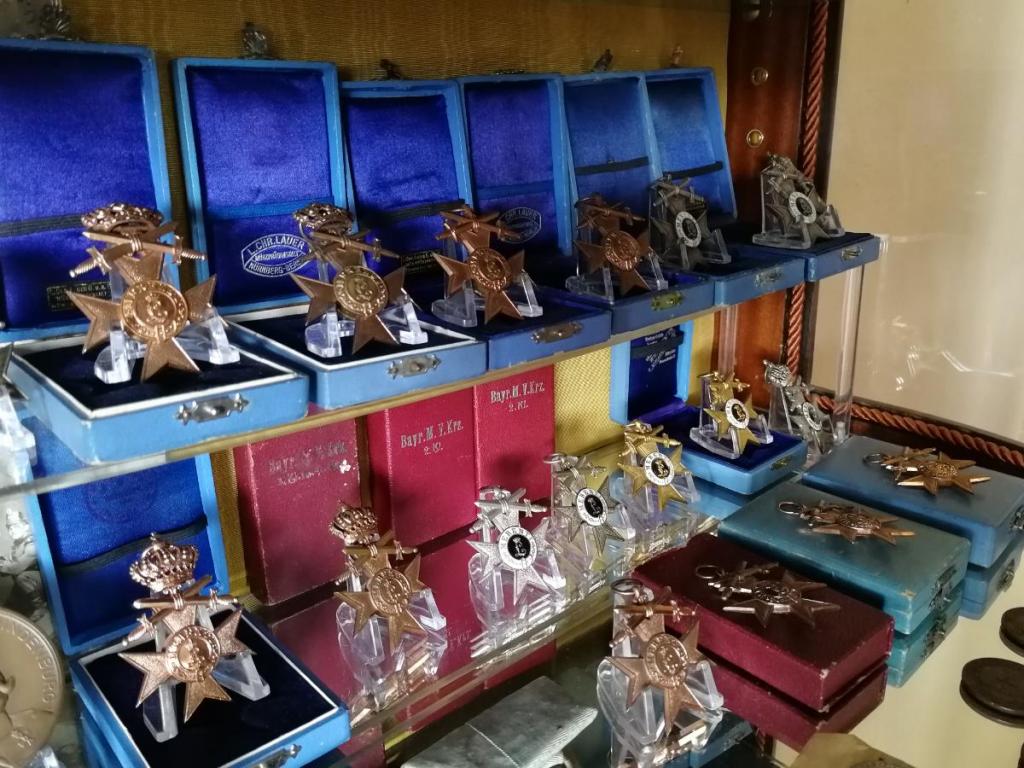-
Posts
498 -
Joined
-
Last visited
-
Days Won
2
Content Type
Profiles
Forums
Blogs
Gallery
Events
Store
Everything posted by spolei
-
Hello, the pieces with crown are usually twice as expensive, because much rarer. 4 class swords about 20,000 awards, MVO 4th class crown and swords about 3,500 awards. This class rarely appears lately, which also drives up the price. The shown cross is a Hemmerle with silver gilded medallion. regards Andreas
-
Hello, beautiful Hemmerle piece. It is an MVO with genuine gold medallions. The award period should be until the end of 1916, from then on silver-gilt pieces were officially issued. Of course, returned pieces may have been issued later. The MVO with swords should be from the war period. How is the band ring stamped on the inside? Regards Andreas
-
Hello, I received some of his father's Luftwaffe badges from a fellow shooter. His father was in the air force in his military days and later also in civil aviation. There are three sets of buttons, one large and one small. What period do these buttons date from? Two sets have an air force eagle with crown, one set has the South African coat of arms. The cloth badge has only one wing, as he was probably an observer and radio operator. What do the letters R - O - M stand for ? The epaulette is probably from civil aviation. Is the small golden eagle for the collar civilian or military? I would be very grateful for any answers, as I am not at all familiar with this subject. Greetings Andreas Translated with www.DeepL.com/Translator (free version)
-
Hello Sascha, I have an evaluation of the VOBl. of a collector colleague with the names of the persons in favour. I checked again, there are not 18 but 25 (please excuse this). The last one listed is Franz Kuhejda, valet of the field marshal Archduke Friedrich of Austria. According to this list, all for war merit, no pre-war awards, with five awards in 1914 and the rest in 1915.
-
Hello, usually the 800 was filed out, because it stands for the silver content. The swords for the MVO were made with the same shape and were silver. The swords of the MVK's were made of non-ferrous metal and were not allowed to carry an 800 mark. Now and then this was not filed away properly or simply forgotten. This applies to all classes of the MVK. Here is a cross from Hemmerle with GH in the agraffe, below the screw The last is a marked Hemmerle with swords from Weiss & Co. Translated with www.DeepL.com/Translator (free version)
-
Hello, the first cross is a relatively early Hemmerle 2nd class. Cross 2 is from Weiss. It is easily recognisable by the thick sword handles and the agraffe. The surface of the cross is strange, it looks like it has been painted over, but that may be due to the photos. Weiss also has the marking WCo on the back of a sword. With Hemmerle sometimes GH and a sophisticated 800 on the back of a sword. There are also Hemmerle that have GH in the agraffe. There were several variations over the four years of the war. I have been collecting for almost 20 years and have over 100 different variants, but by no means all of them. Some MVK of my collection, see pictures. Regards Andreas Translated with www.DeepL.com/Translator (free version)


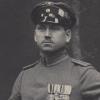
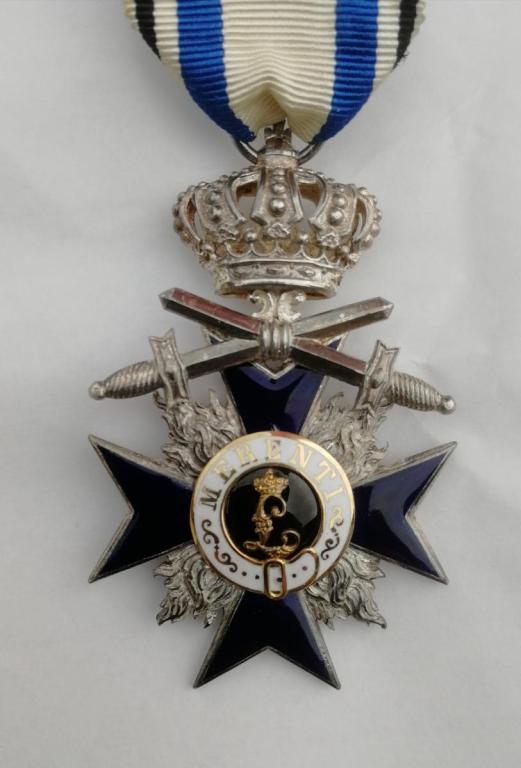

.thumb.jpg.d85dd1dd70a60459ca9c2e5aabe1cd2b.jpg)
.thumb.jpg.fe49f8d49984f774eacf584b60f69f8b.jpg)
.thumb.jpg.659e1dc8c6097cccfd64e5e96c3dcda6.jpg)
